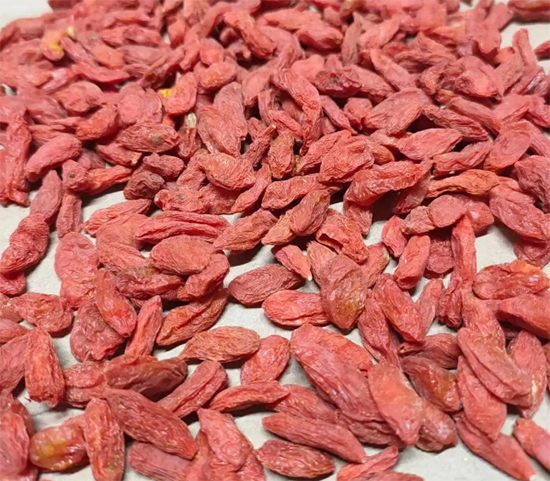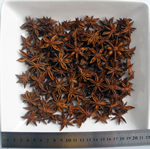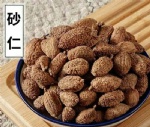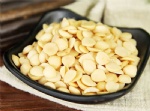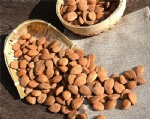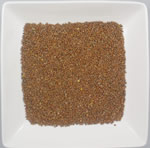
|
KWOK SHING HONG |
|
|||
Products CategoryContact Us
Add: China |
Item : GMP Details :Lycium chinense Miller (Lycium chinense Miller), Solanaceae Lycium is a perennial woody plant, with thin and weak branches, bow-shaped curved or drooping, light gray; leaves are oval; flowers grow on long branches solitary or twin in leaf axils; fruit is egg-shaped berry red; flowering period is June-July; fruit period is August-October. Lycium barbarum originated in China and is mostly distributed in temperate and subtropical regions. It is cultivated in most provinces and regions in northern China, often growing on hillsides, roadsides or villages. Lycium barbarum likes light, likes cold climates, and is cold-resistant; it has strong drought resistance and can still grow in arid deserts. It is resistant to salt and alkali. It mostly grows on alkaline soil and sandy loam, and is most suitable for cultivation on deep and fertile loam. Lycium barbarum is generally propagated by seeds or cuttings. The name wolfberry first appeared in the "Book of Songs" in China more than 2,000 years ago. Li Shizhen, a pharmacist in the Ming Dynasty, said: "Lycium barbarum, the name of two trees. The thorns of this thing are like the thorns of wolfberry, and the stems are like the strips of wolfberry, so it is also named." Dao Shu said: "Lycium barbarum for thousands of years, its shape is like a dog, so it is named wolfberry. Is it true that it has not been examined?" Song said: There are three kinds of fairy sticks: one is wolfberry; the other is vegetables with leaves like chicory; "Wolfberry" is the most common English name for wolfberry. Its origin is not very clear. Perhaps because the confusing sound of its generic name Lycium is similar to Lycos, and Lycos has the meaning of wolf, it is called Wolfberry. The other English name "Goji Berry" has been called since the 21st century, that is, Chinese wolfberry has entered the international market, and more and more Europeans have recognized wolfberry, so it comes from the pinyin gǒuqǐ of wolfberry. Lycium barbarum is a nutritious and health-care vegetable and a precious traditional Chinese medicine with the same source of medicine and food. It is recorded in "The Classic": "Lycium barbarum controls five internal evils, quenches thirst in heat, and prevents rheumatism in the week. Long-term use can strengthen muscles and bones, lighten body and not grow old, and withstand cold and heat." In folk culture, the fiery red wolfberry is a symbol of auspiciousness and one of the eight auspicious plants in Chinese folk culture. "Zhanzhan Lusi, on the other side of the thorn. Show the gentleman, and let him be virtuous." These four sentences use wolfberry to praise the virtues of noble gentlemen, which shows that wolfberry enjoyed a high reputation in people's life during the Zhou Dynasty and was rich in cultural connotations. Lycium barbarum is often used to improve symptoms such as soreness of the waist and knees, asthenia and essence deficiency, dizziness and tinnitus, impotence and nocturnal emission, internal heat and thirst, blood deficiency and chlorosis, and blurred vision. Large wolfberry and small wolfberry are usually only different in size, and there is not much difference in other aspects. However, it is necessary to strictly follow the doctor's advice when taking the medicine, and not blindly use the medicine. When taking the medicine, it is necessary to avoid eating cold, cold, spicy and stimulating food. There are many folk names for wolfberry in China, such as Gouqizi, wolfberry red fruit, beet seed, wolfberry, dog milk, red green pepper, wolfberry, wolfberry fruit, ground bone, wolfberry eggplant, red earrings, blood wolfberry, wolfberry sprouts, wolfberry beans, blood wolfberry, and wolfberry. In Zhongning County, Ningxia Hui Autonomous Region, the main producing area of wolfberry in Ningxia, farmers are used to calling wolfberry "ci", which means Tribulus terrestris. This is because wild wolfberry is similar to Tribulus terrestris, and is often mixed for firewood. People are used to using "ci" as the common name of wolfberry. In the countryside of Zhongning, the wolfberry garden is called Ciyuan, the wolfberry tree is called Cishu, and the wolfberry branches are called Citiao. Therefore, the rural area of Zhongning, which is rich in wolfberry, is also called Cixiang, and the culture rich in Zhongning's local characteristics is often called Cixiang, such as Cixiang Opera and Cixiang Ballads. However, in the field of medicinal materials, wolfberry is the fruit of wolfberry, and titles such as ciguo and citrus are not used. Goji berry history and legend In the heyday of the Tang Dynasty, it is said that one day, a group of merchants from the Western Regions came to the Silk Road. They stayed in an inn in the evening and saw a woman scolding an old man. The businessman stepped forward and asked, "Why do you beat and scold the old man like this?" The woman said, "What does it have to do with you if I scold my grandson?" Everyone who heard it was shocked. It turned out that the woman was over 200 years old, and the old man was also in his nineties. He was beaten because he refused to abide by the family rules and take herbal medicine, which caused premature aging and dim eyesight. The businessman was amazed and asked the female birthday star for the secret of longevity? Seeing the sincerity of the messenger, the female birthday star told him that she took wolfberry in four seasons. Later, wolfberry was introduced to the Middle East and the West, and was hailed as the oriental god grass by the people there. Barcode: GMP Ingredients: Wolfberry Specifications: 16oz (454g) Efficacy: nourishes the liver; nourishes the kidney; moistens the lungs. Indications for liver and kidney deficiency, dizziness, blurred vision, soreness of the waist and knees, impotence and nocturnal emission, consumptive cough, thirst and drinking. Send Inquiry : |
Home
|
About Us
|
Products
|
News
|
Feedback
|
Contact Us
|
SiteMap
Copyright © 2025 KWOK SHING HONG All Rights Reserved
Copyright © 2025 KWOK SHING HONG All Rights Reserved






 KWOK SHING HONG
KWOK SHING HONG  果实籽仁类
果实籽仁类 